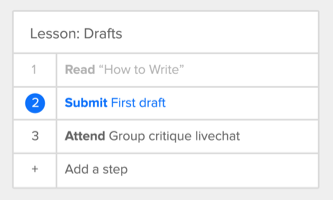The question whether to hire a part-time contractor or full-time employee depends on the length of the project and budget. Contractors are good for small jobs while an employee can go the long haul. Both employers and their potential hires should look at the benefits and pitfalls for each model.
Also consider the quality of work a part-time contractor puts in versus a full time employee. Typically, contractors prove adept at task oriented projects, for instance where checklists or repairs are needed. Anything with nuance, however, requires that someone be vested in the project for a longer period of time.
Consider office expenses
 Having a physical location where workers come and focus on projects has its benefits and detractions. Without having to pay for utilities or rent, an employer can better afford their workers. Nonetheless, telecommuting is rife with problems, not the least of which are those workers who claim to be putting in their hours but are not. The federal website HUD.gov offers helpful tips if you’re considering the telecomuting option, for instance the need for increased management, scheduling and training for workers who will work from afar.
Having a physical location where workers come and focus on projects has its benefits and detractions. Without having to pay for utilities or rent, an employer can better afford their workers. Nonetheless, telecommuting is rife with problems, not the least of which are those workers who claim to be putting in their hours but are not. The federal website HUD.gov offers helpful tips if you’re considering the telecomuting option, for instance the need for increased management, scheduling and training for workers who will work from afar.
What type of job are you hiring?
We’ve outlined a cheat-sheet for those types of hires, starting with the type of job and listing the ideal hire – either part-time contractor or full-time employee. There’s also an assignment for how difficult it is to find someone for each of these jobs.
| Type of Job to Hire | Ideal Hire | Difficulty |
|---|---|---|
| Website Designer | Part-Time | Easy to Find |
| Programmer | Full-Time | Hard to Find |
| Website Manager | Full-Time | Easy to Find |
| Sales Manager | Full-Time | Easy to Find |
| Data Entry | Part-Time | Easy to Find |
| Customer Support | Full-Time | Easy to Find |
| Content Strategist | Full-Time | Hard to Find |
| Text Editor | Part-Time | Easy to Find |
| SEO Manager | Part-Time | Easy to Find |
| Server Manager | Part-Time | Easy to Find |
| Secretarial | Full-Time | Easy to Find |
Considering your budget
There’s also the issue of budget when considering whether to hire a contractor or employee. There are many online employee calculators to approximate what your up against when hiring an employee. Jolanders has a free version of its downloadable “How much an employee really costs” spreadsheet for figuring out payroll. Employees cost more than most people think. For example, paying someone a $70,000/year in salary could mean you’ll be paying them for vacation days, too. There are also legal obligations to consider when hiring full time employees, including maternity leave and unemployment benefits that will have a financial impact on the employer.
Most companies give employees time off for various holidays, so that should really be included in the calculation. The problem is that different countries can vary in their national holidays, and your company may give certain days off but not others. On average, in the U.S. there are 7 major holidays: New Years Day, Memorial Day, Independence Day, Labor Day, Thanksgiving, the day after Thanksgiving (since this is always a Friday), and Christmas. Many businesses also have an additional floating holiday that is sometimes used for Christmas Eve, New Years Eve, or one of the days near July 4th.
– http://www.convertunits.com/salary/70000
Do the math
Setting a budget and understanding how much a salary costs means doing a little math. As a baseline calculation, let’s say you are one of those employees who won’t pay for vacation, but will offer 2 weeks off each year as unpaid vacation time.
Total time worked = 50 weeks (2,000 hours)
$70,000 salary = $35 per hour
There are many ways to slice the bread when considering the question whether to hire a contractor or employee. Something gained is also something loss when choosing a part-time contractor versus a full-time employee. It’s best to consider all factors before deciding which type of hire is right for you.






 These are very brief overviews for how to start an online teaching business. Once plugged in, these components can be leveraged to differentiate your teaching business from the others. So, you’re logging in every day to flesh out your website with information and a daily blog post that is also being pushed to all social media outlets. Disseminating information in parallel is good for
These are very brief overviews for how to start an online teaching business. Once plugged in, these components can be leveraged to differentiate your teaching business from the others. So, you’re logging in every day to flesh out your website with information and a daily blog post that is also being pushed to all social media outlets. Disseminating information in parallel is good for 





 Contractors and companies bring a charming sales pitch when they promise fast and professional digital media building services, but don’t ignore the vetting process. Choosing a good website builder requires due diligence that ensures they have both technical and marketing prowess. The builder must also have a great support system backing up what they do.
Contractors and companies bring a charming sales pitch when they promise fast and professional digital media building services, but don’t ignore the vetting process. Choosing a good website builder requires due diligence that ensures they have both technical and marketing prowess. The builder must also have a great support system backing up what they do.